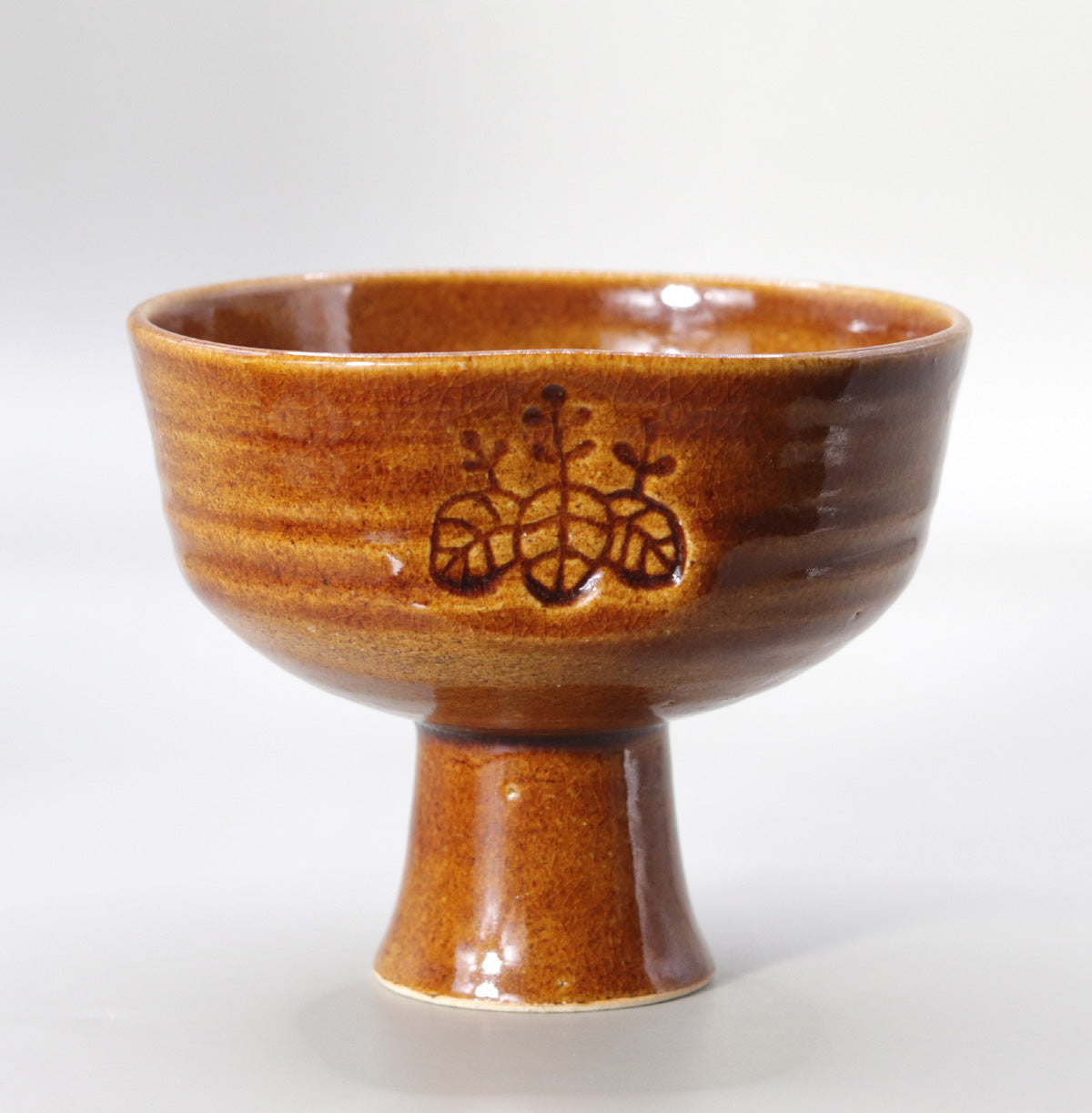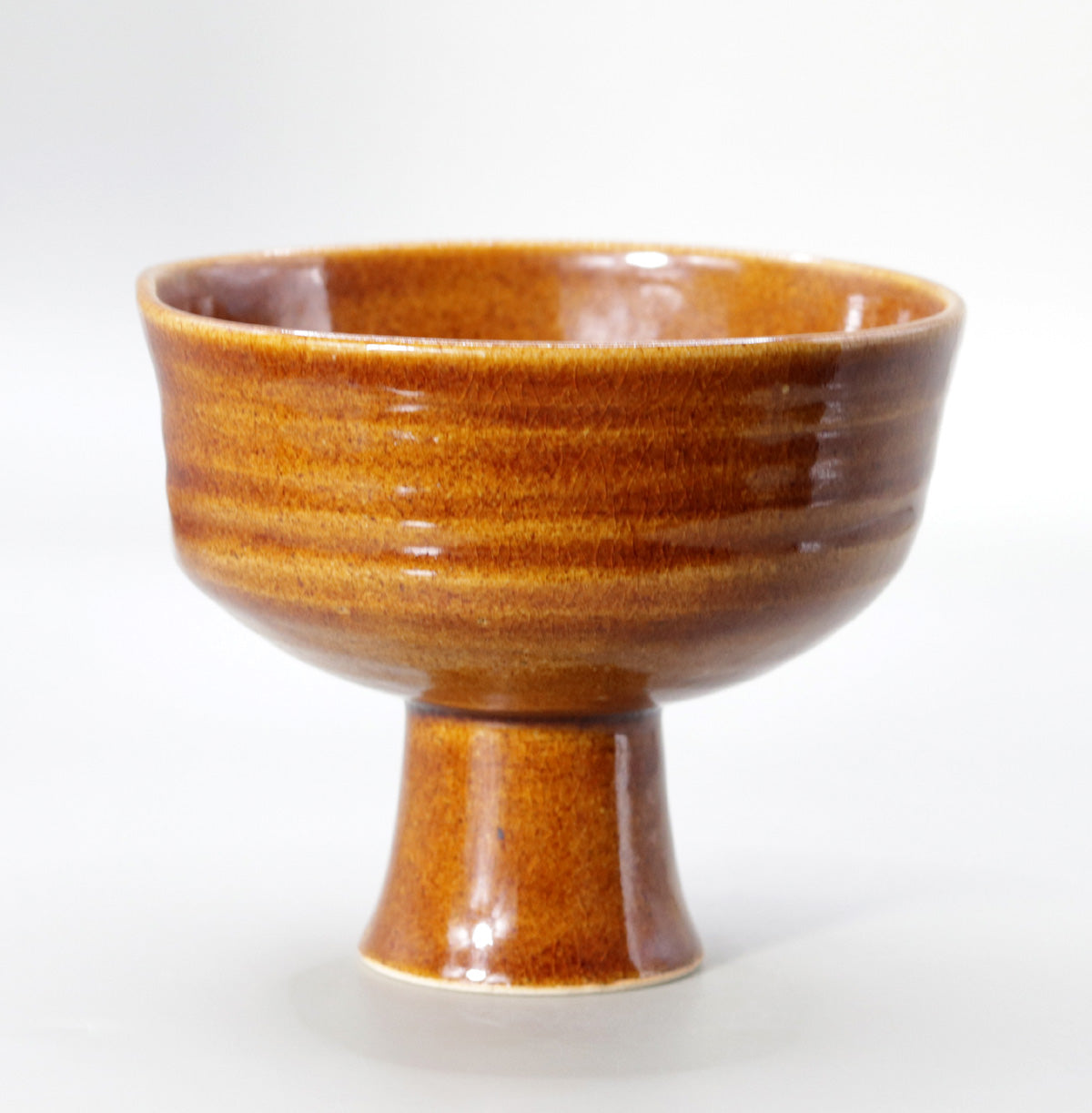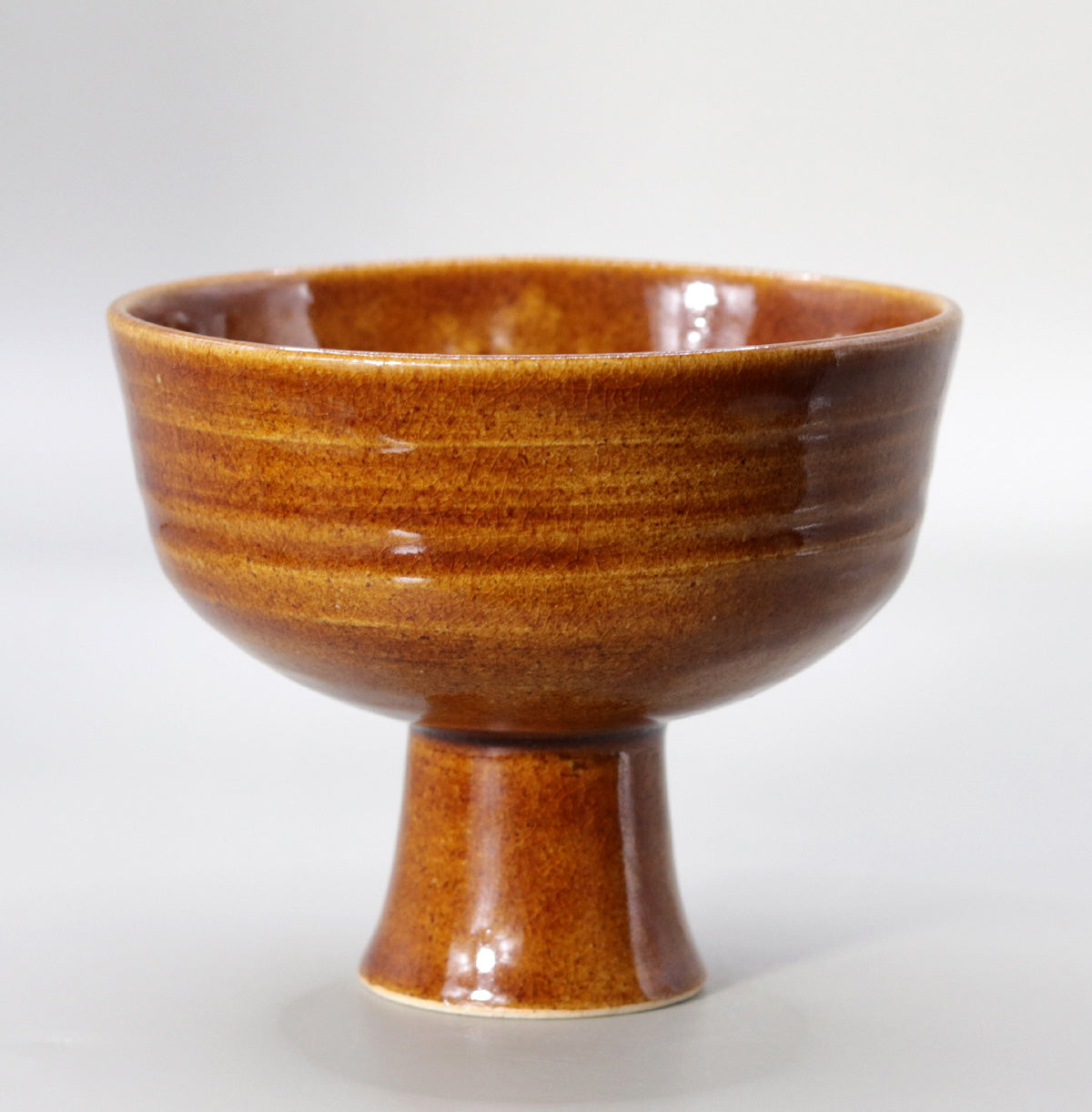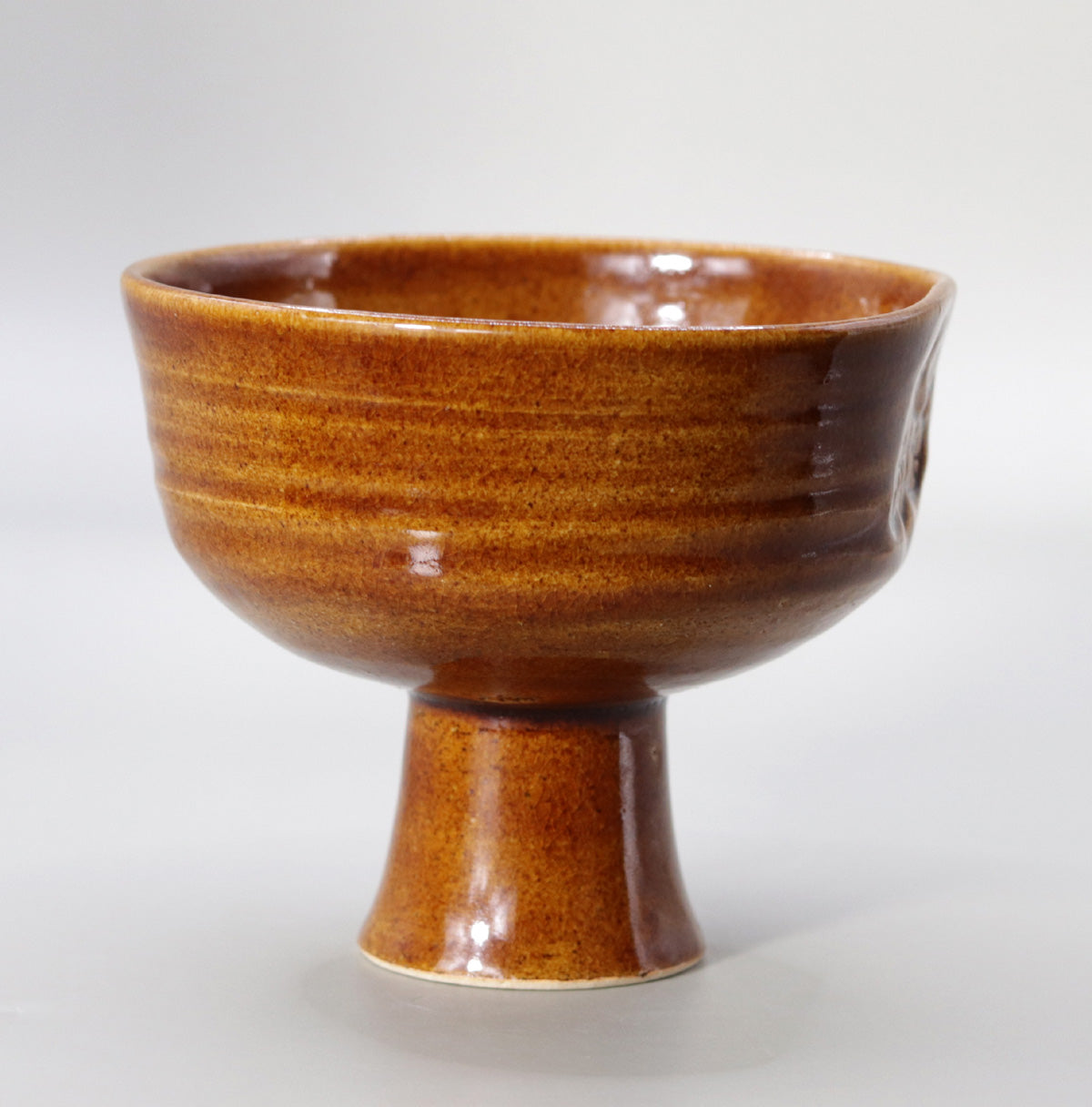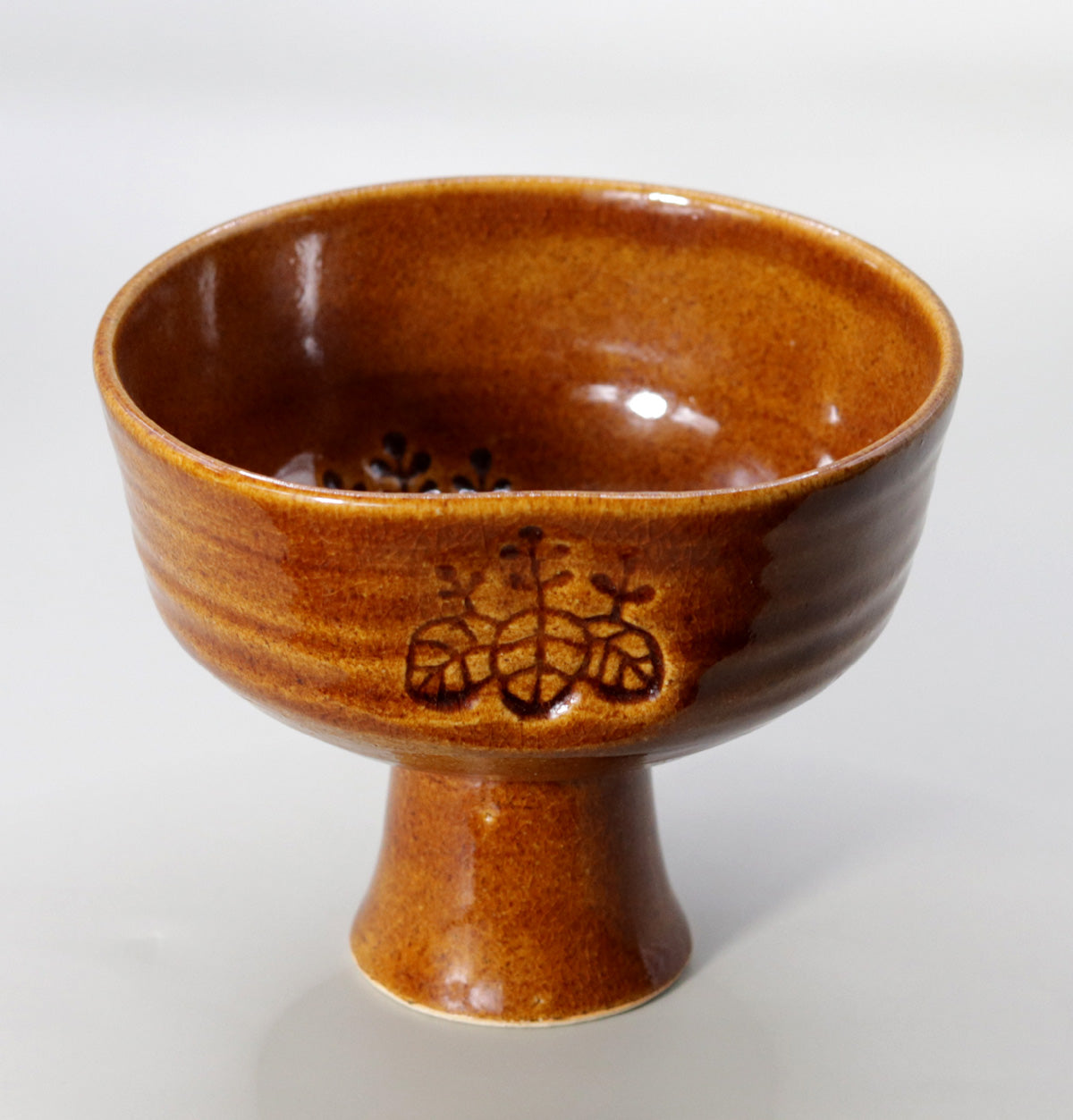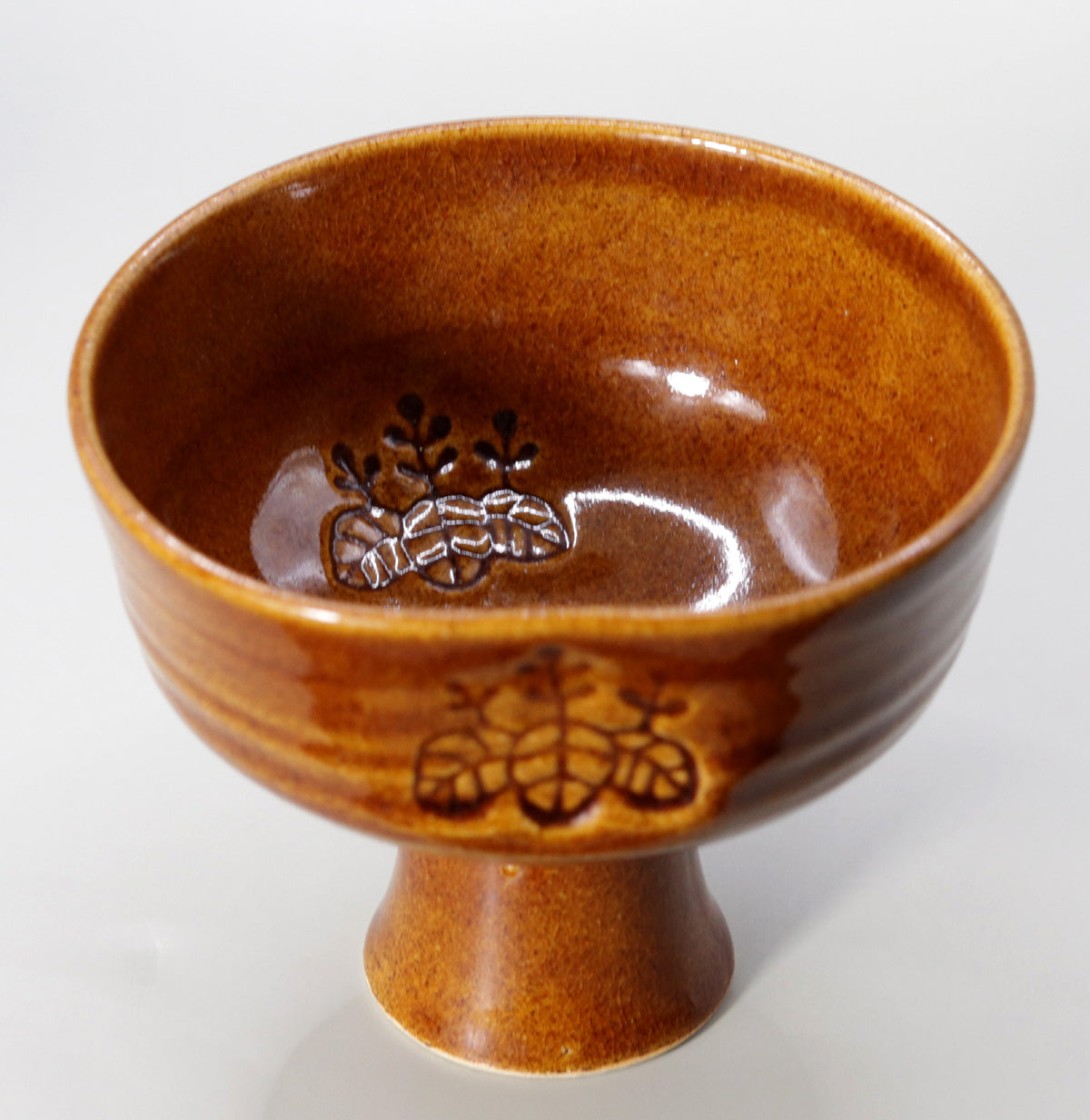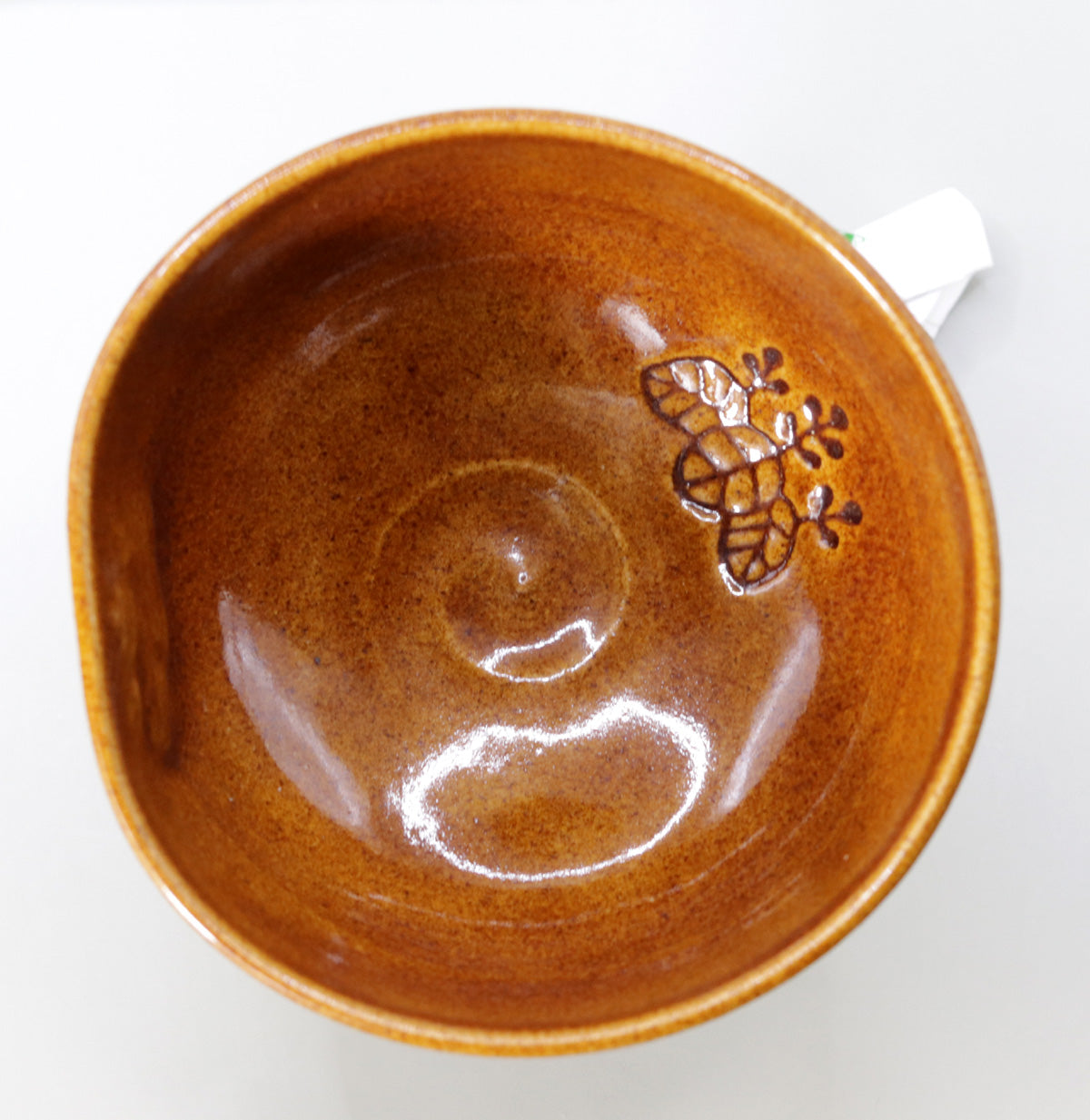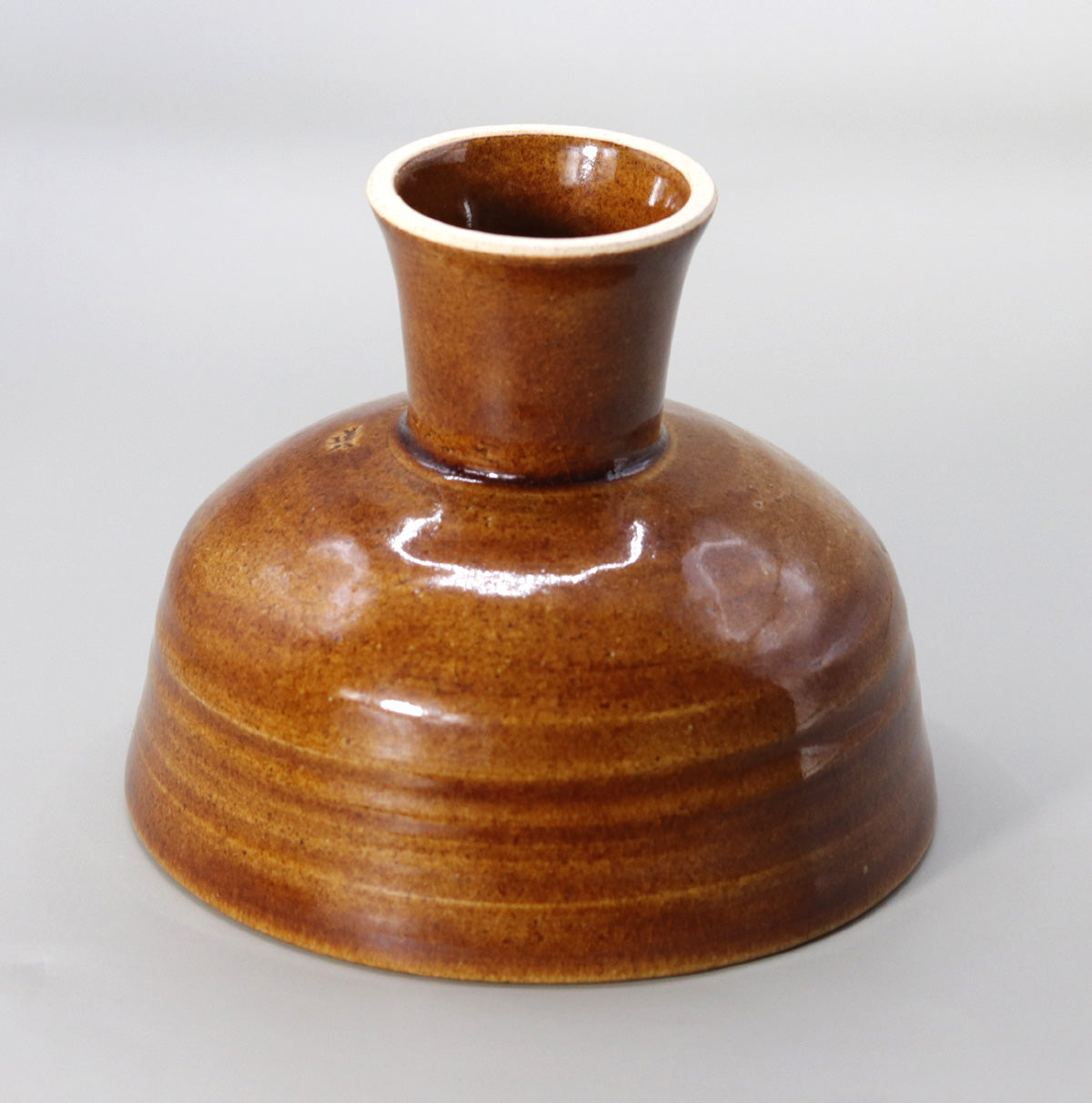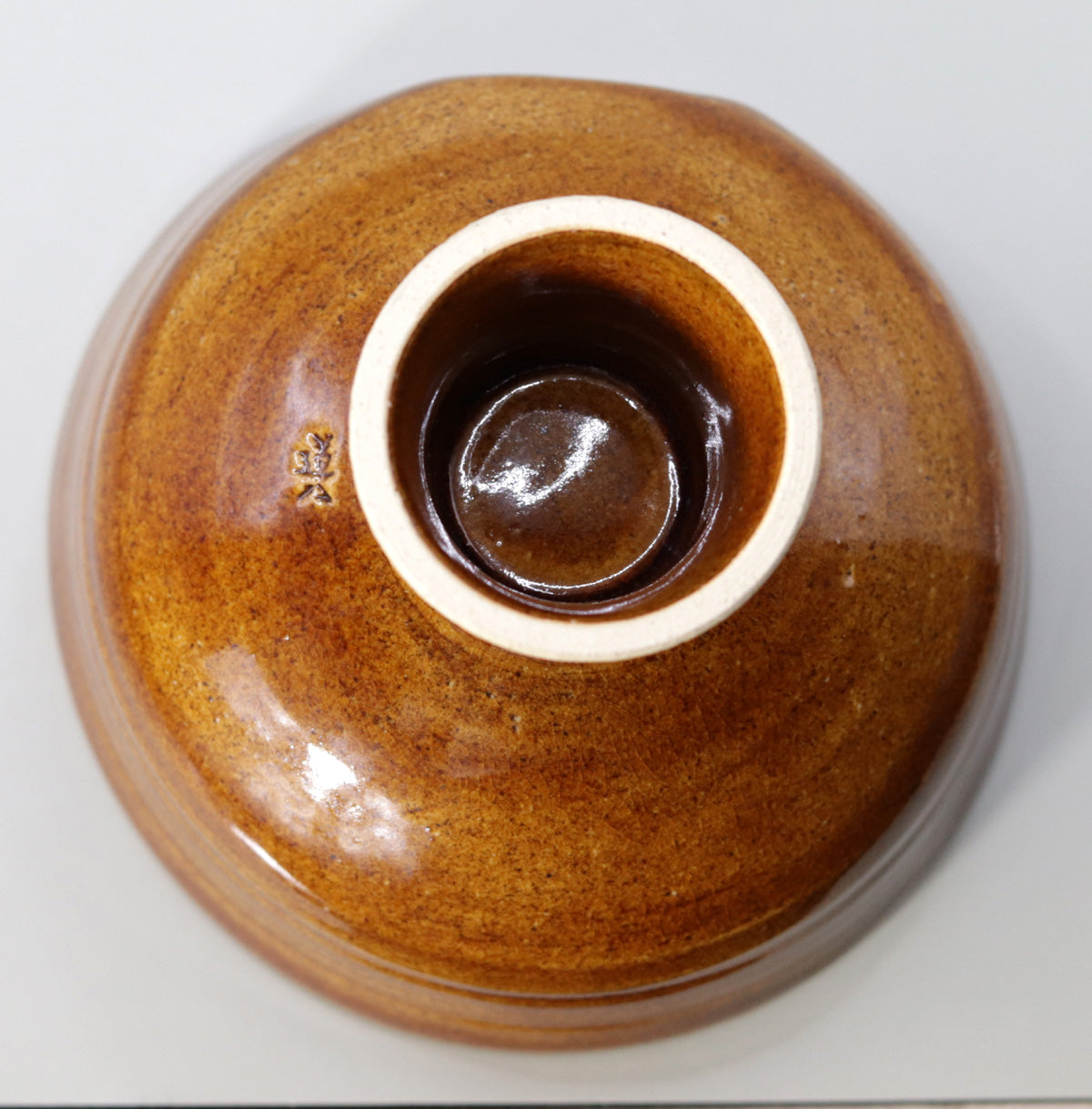Tea Bowl Candy Glazed Horseback Riding Cup by Takahashi Dohachi
Tea Bowl Candy Glazed Horseback Riding Cup by Takahashi Dohachi
Couldn't load pickup availability
Width: 12.3cm Height: 9.98cm
Candy-glazed horse-mounted tea bowl - Takahashi Michihachi, 9th generation
This piece, created by Michihachi Takahashi, is a tea bowl with a generous amount of amber glaze and an impressive high base. Below, we will introduce its charm and historical background in detail from five perspectives.
1. Beauty of form - The dignified appearance of the horse-riding sake cup shape
A horse-riding sake cup is a type of sake cup with a high stem so that military commanders could drink sake while on horseback, and has a form that originated in ancient China and Korea. This piece applies this design to a tea bowl, with a bulging body and a long, slender trumpet-shaped base. Visually, it has the sublime appearance of a holy grail, and when placed on a table, the cup has a lightness that makes it appear as if it is floating in the air. The rim opens slightly outward, ensuring practicality by catching the plump foam of matcha tea.
2. Glaze Tone - The warmth and luster of the candy glaze
Candy glaze is a high-fired glaze made from feldspar that contains a lot of iron, and changes color from honey to amber when fired by oxidation. This piece shows layered color changes due to the thick application of the glaze, and stripes of light and dark appear as if tracing the gentle wheel marks on the body. The glaze surface has a strong glassy luster and is slightly crazy, which allows tea stains to soak in over time and develop a unique appearance, giving it the "beauty of utility."
3. Design: " Paulownia crest " floating in the center of the body
On the front of the body, a symbolic design of the paulownia crest is shallowly carved and painted in gosu. This is known as an auspicious pattern that symbolizes prosperity and permanence. Under the candy glaze, only the pattern sinks into a slightly dark brown color, creating an effect that makes it stand out like a relief, giving it a three-dimensional feel that is different from flat painting.
4. Techniques: Carved out patterns and thick candy glaze
After bisque firing, a pattern is shallowly carved into the body, and then iron oxide pigments are rubbed into it using a technique similar to "scraping off", after which a candy glaze is applied and fused during final firing. The ingenuity of controlling the thickness of the glaze while preventing the pattern from being buried is the result of advanced wheel and kiln-handling techniques that allow the glaze to be applied evenly to the sides of the foot. The glaze is carefully wiped off to prevent it from seeping around the inside of the foot, ensuring both safety for the tatami mat and the appearance.
5. Historical and cultural background: The transformation of horse-saddled sake cups into tea ware
The horse-riding sake cup shape originated from the Muromachi period reverence for Chinese goods and the drinking ceremonies of Sengoku warlords, and was adopted in Japan from the Momoyama period to the early Edo period. The height of the foot emphasizes the "aesthetics of metaphor," and the playful idea of "transforming a sake cup into a tea bowl" has been popular among tea masters. Even today, by combining the warm color of the candy glaze with the elegance of the horse-riding sake cup, it becomes a vessel that combines formality and familiarity, and is useful for the first tea ceremony of the New Year and celebratory tea ceremonies. Takahashi Dohachi is known as a master of Kyoto ware color painting, but he also excels in attempting to sublimate the image of ancient pottery into a modern one, and this work is a good example of that.
The Takahashi Dohachi family has been known as a prestigious Kyoto ware color painting family since the late Edo period. The ninth generation master graduated from the Department of Clothing Design at Kyoto Bunkyo Junior College, majored in design, and then went on to the Department of Molding and Research at Kyoto Prefectural Ceramic Technical College, and further solidified his technical foundation at the Kyoto Industrial Research Institute.
In 1996, he began to study pottery under his father, Dohachi Yashiro, and began making pottery in earnest.
In 2012, he took on the name of the ninth Takahashi Dohachi.
His style, which combines the sense of form cultivated in clothing design with the traditional techniques of Kyoto ware, has breathed new life into the Dohachi family of pottery and displays a sophistication that stands out in modern tea ceremonies and gallery spaces.
This tea bowl combines the lustrous shine of the candy glaze, the dignified design of the paulownia crest, and the taut proportions of the horse-riding sake cup shape, making it a masterpiece that exudes both a sense of celebration and warmth. When you pick it up, the high base rests naturally on your fingers, and the stability of the center of gravity gives you peace of mind. The way the green of the matcha is reflected in the amber color is exceptional, and it will enrich your soul not only on special occasions, but also when used in everyday practice. We hope you will treasure it for a long time and enjoy the sight of the candy glaze deepening over time and the outstanding beauty of Takahashi Michihachi's sculpture.
Share
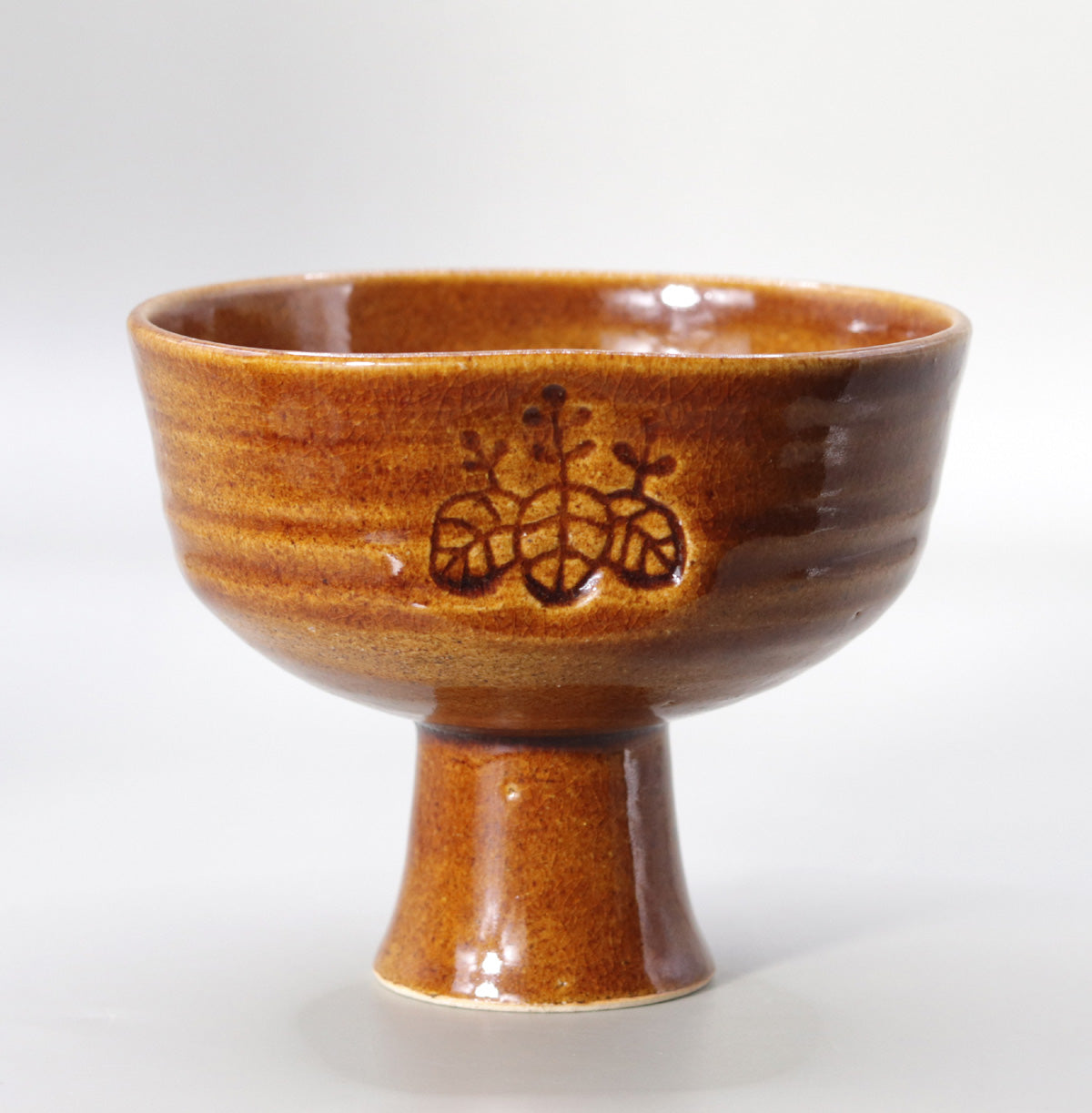



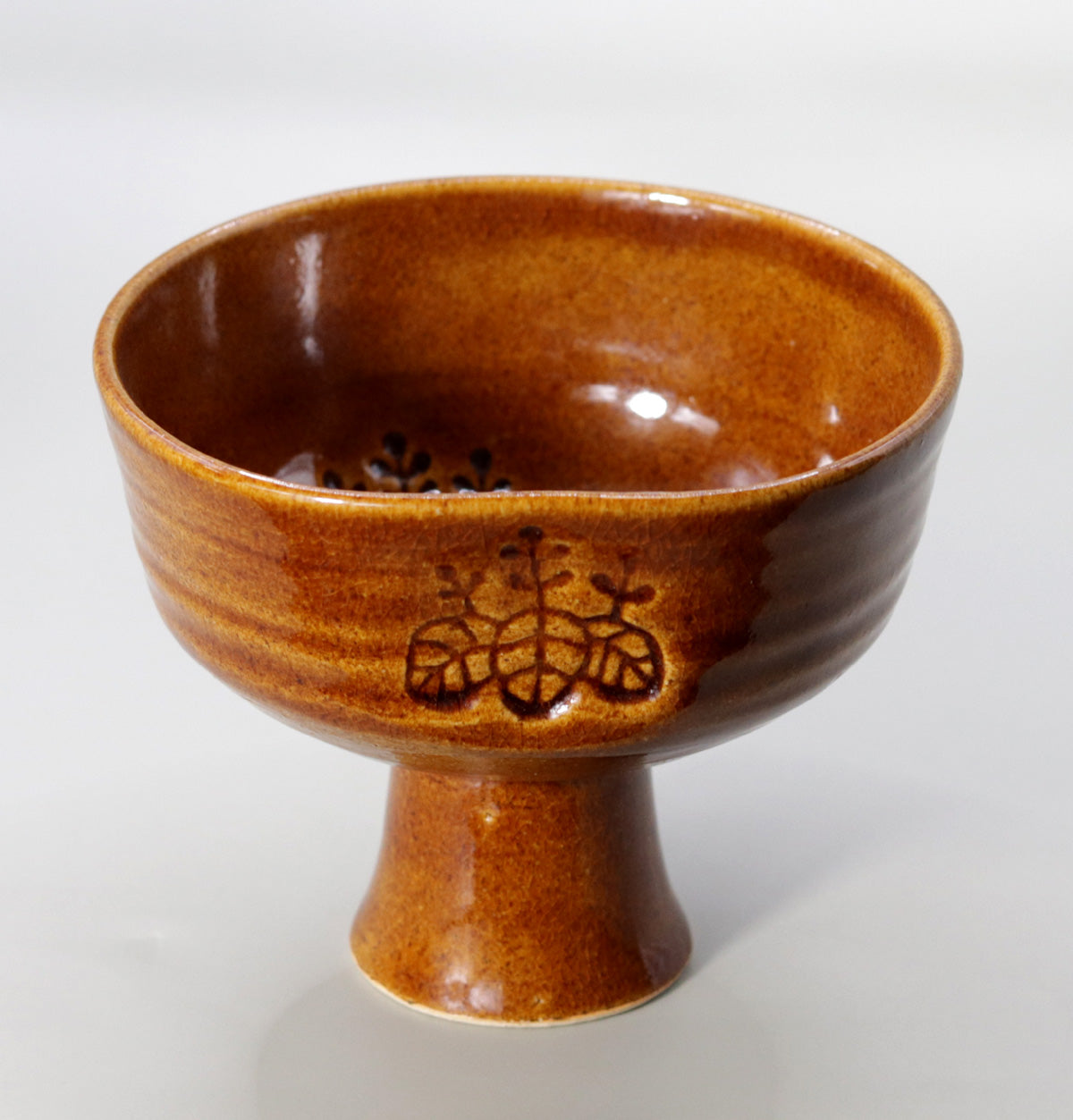

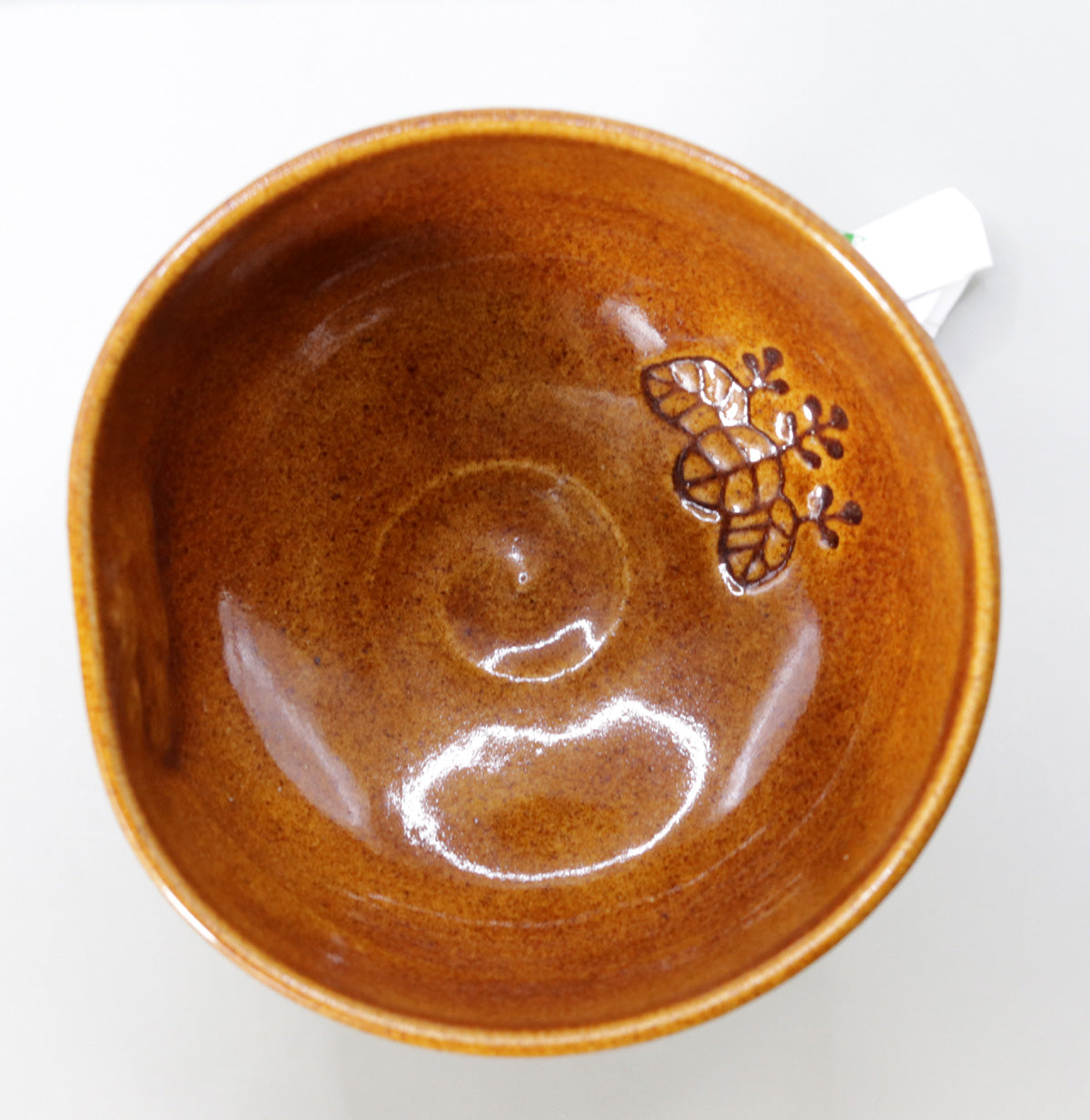
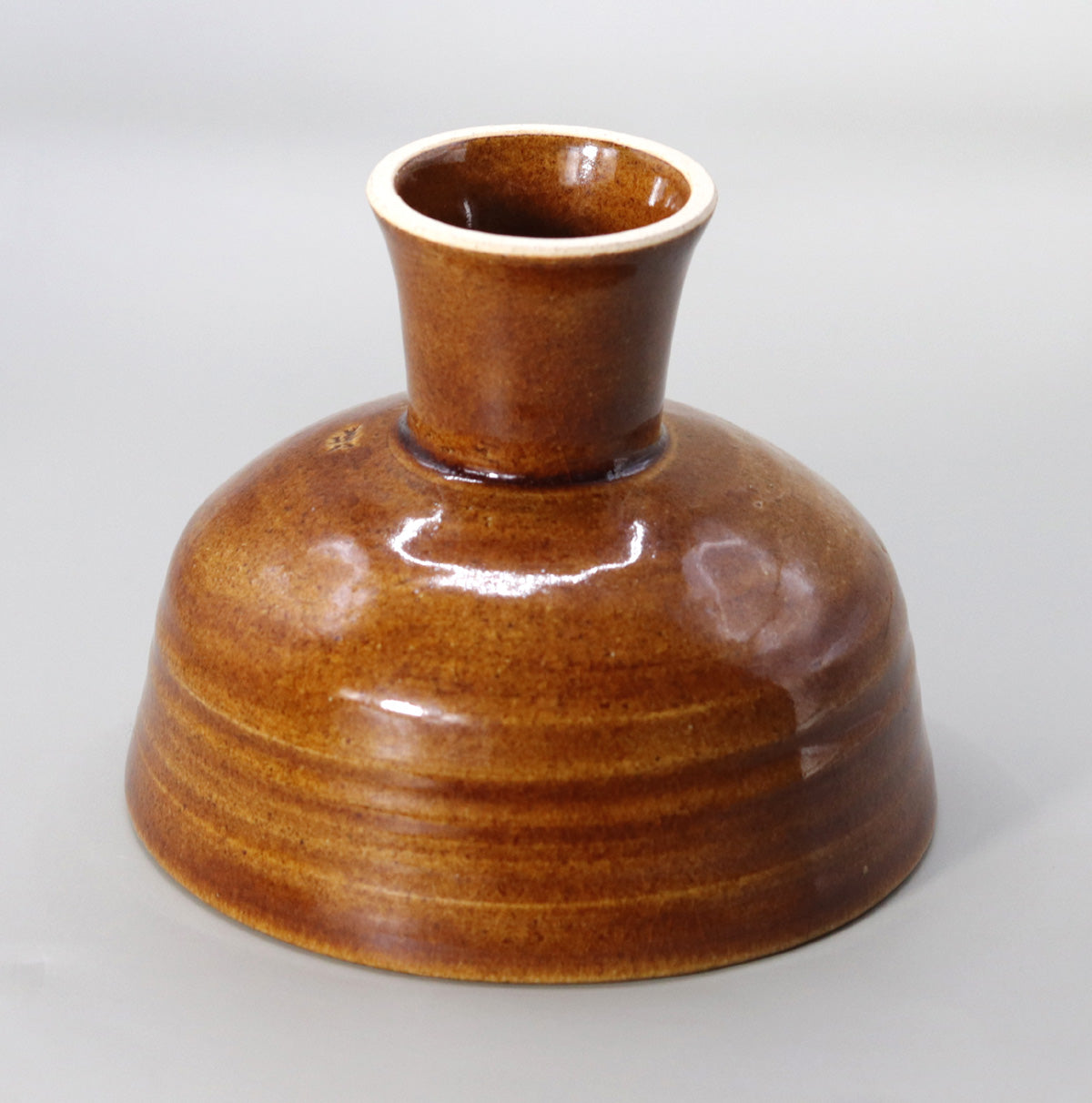
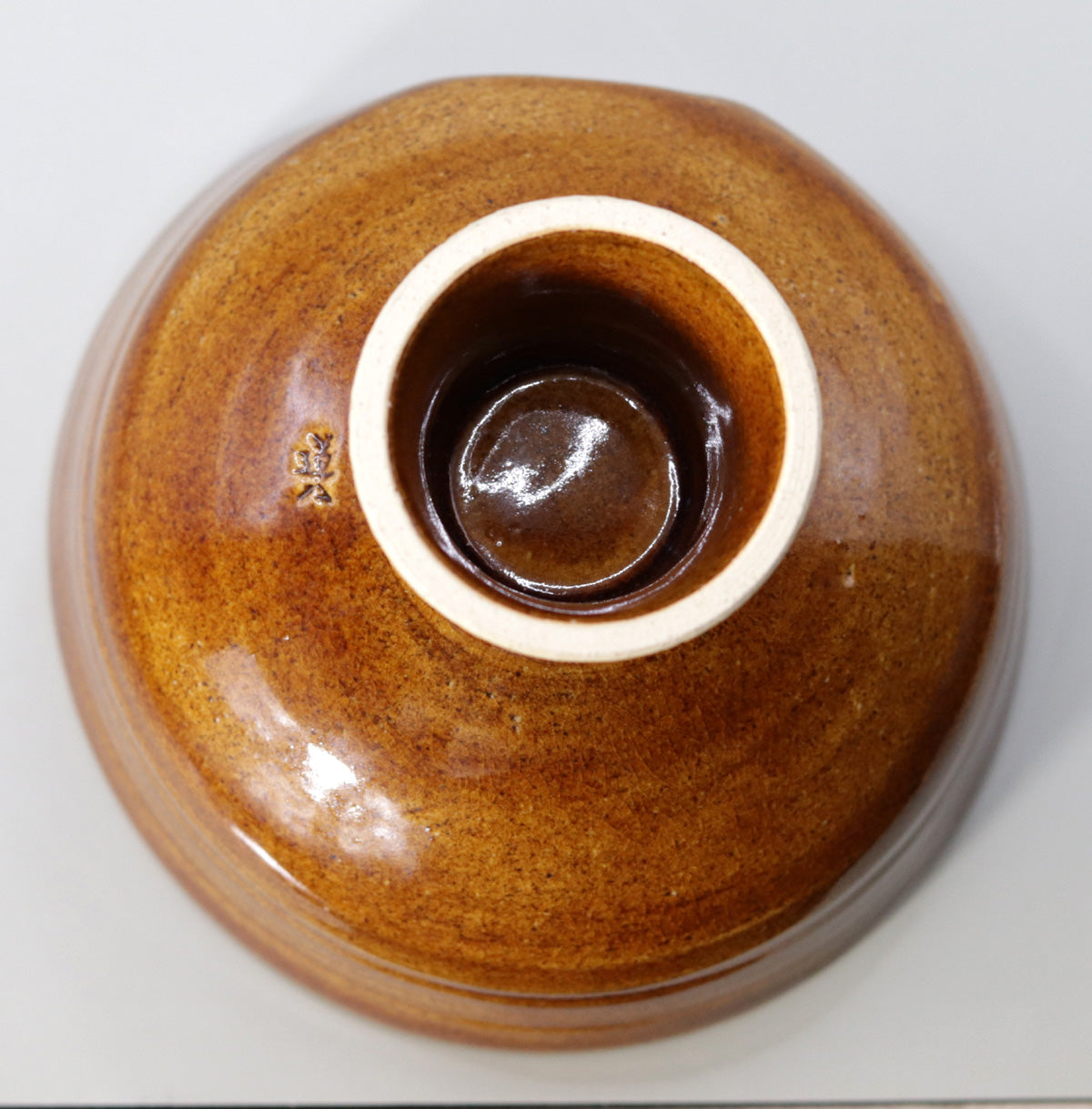
Multi-Column
-
[I will send it to you quickly and carefully]
We carefully package each product in a way that suits it best.
Also, delivery times vary depending on the piece (vessel, etc.).
Items that already come with a box will be shipped within 1-3 days of the order date.
For items that require a box to be made after your order, it will take approximately 30 days for production to be completed and then shipped.
In either case, once we have confirmed your order, we will contact you by email to inform you of the delivery date.
-
[Requests when purchasing pottery]
Even products that look the same may differ slightly in color, shape, size, etc.
The way the glaze is used, the power of the kiln, the firing method, the season, and the humidity also affect the appearance of the pottery.
Please understand the individuality of each piece of pottery and enjoy the unique warmth of handmade.

